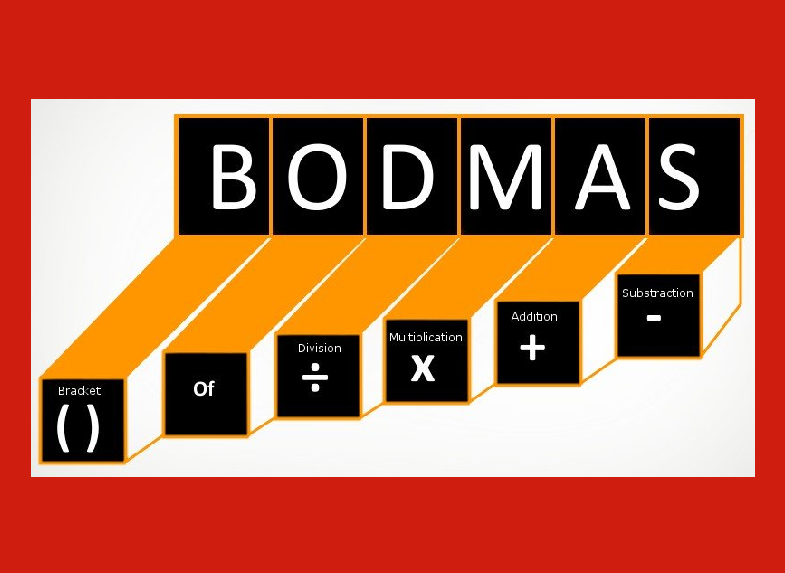Fractions are fundamental mathematical entities used to represent parts of a whole or quantities expressed as ratios. Hence, mastery of fraction calculations is essential for navigating various mathematical problems and real-life scenarios. Thus, this comprehensive blog delves into advanced fraction calculations, focusing on; multiplication, division, brackets, “Of” fraction operation involving positive and negative fractions, working with fractions enclosed within brackets, performing the “of” operation, mastering the “bar” operation, and solving a variety of problems involving fractions. Therefore, by the end of this exploration, you’ll be equipped with the knowledge and skills to confidently tackle complex fraction calculations and apply them to diverse mathematical challenges.
Before we go deeper into multiplication, division, brackets, “Of” fraction operation, I would like to remind you as a learner that LearnersCamp provides additional insights into these disparities. Additionally, LearnersCamp has grown to become a valuable platform for learners seeking to deepen their understanding of mathematical concepts. Moreover, it has a user-friendly interface and a vast array of educational materials, including articles, tutorials, and interactive quizzes; LearnersCamp offers comprehensive guidance on such topics. Hence, by visiting LearnersCamp, learners can access clear explanations, practical examples, and engaging exercises to solidify their grasp of these fundamental mathematical principles.
Computing Products and Divisions Involving Positive and Negative Fractions:
Multiplication and division involving positive and negative fractions follow specific rules based on the signs of the fractions involved.
- Multiplication:
Firstly, when multiplying fractions, the signs of the fractions determine the sign of the product. So, If the signs are the same (both positive or both negative), the product is positive. If the signs are different, the product is negative. Example:
⅔ x (-⅘) = – 8/15 - Division:
Secondly, division of fractions follows the same rules as multiplication. Hence, the signs of the fractions determine the sign of the quotient. Example:
¾ / -⅔ = -9/8
- Practical Illustration:
Imagine you owe someone ¾ of a dollar, and you divide this debt among ⅔ of your friends. Each friend will owe you -9/8 of a dollar.
Working with Fractions Enclosed within Brackets:
Fractions enclosed within brackets, whether inner or outer, are treated similarly to regular fractions. However, it’s essential to perform operations within the brackets first before tackling operations outside the brackets.
- Example:
½ x {(¾ – ¼)}
First, perform the operation inside the brackets: ¾ – ¼ = 2/4 = ½
Then, multiply by ½ : ½ x ½ = ¼
Performing the “Of” Operation on Positive and Negative Fractions:
The “of” operation involves multiplying a fraction by a whole number. Notably, this operation is straightforward and follows the rules of fraction multiplication.
- Example:
¼ of 20
Multiply ¼ by 20: ¼ x 20 = 5
- Practical Illustration:
If you need to calculate ¼ of 20 dollars, simply multiply ¼ by 20 to get 5 dollars.
Mastering the “Bar” Operation on Positive and Negative Fractions:
The “bar” operation involves dividing a fraction by a whole number. Thus, this operation is essentially division and follows the rules of fraction division.
- Example:
¾ bar 2
Divide ¾ by 2: ¾ / 2 = 3/8
- Practical Illustration:
If you have ¾ of a pizza and you divide it into 2 equal parts, each part will be ⅜ of the original pizza.
Computing Sums and Differences Involving Positive and Negative Fractions:
Adding and subtracting positive and negative fractions follows the same rules as integers. Different signs indicate subtraction, while the same signs indicate addition.
- Example:
⅓ – (-2/5)
Since subtraction of a negative is equivalent to addition, this becomes: ⅓ + ⅖ = 5/15 + 6/15 = 11/15
- Practical Illustration:
Imagine you have ⅓ of a cake, and someone gives you -2/5 of another cake. Combining them, you’ll have 11/15 of a cake.
Practical Application in Real-Life Scenarios:
Understanding fraction calculations is not just about solving abstract mathematical problems; however, it’s about applying these concepts to real-world situations. As such, let’s explore some practical scenarios where fraction calculations come into play:
- Financial Transactions:
When dealing with finances, fractions often arise in situations such as dividing expenses among roommates, calculating discounts, or splitting bills. Thus, understanding how to compute fractions accurately ensures fair and efficient financial transactions.
- Recipe Adjustments:
Many recipes require precise measurements, often in fractions. Thus, being able to adjust recipe quantities, convert fractions, or scale up or down ingredients based on serving sizes is crucial for successful cooking and baking.
- Construction and Measurement:
In construction and engineering projects, fractions are used to measure dimensions, calculate areas, and estimate quantities of materials needed. Hence, knowing how to perform fraction calculations accurately ensures the integrity and safety of structures.
- Data Analysis and Interpretation:
Fraction calculations are also prevalent in data analysis, where proportions and percentages play a significant role. Thus, whether analyzing survey responses, market shares, or budget allocations, understanding fractions is essential for making informed decisions based on data.
Guiding Principles for Fraction Calculations:
To excel in fraction calculations, it’s essential to keep the following principles in mind:
- Practice Regularly:
Like any other skill, mastering fraction calculations requires practice. Therefore, work through various problems, both theoretical and practical, to reinforce your understanding and improve your computational skills.
- Understand the Conceptual Framework:
Rather than relying solely on memorization, strive to understand the underlying concepts behind fraction calculations. Notably, this conceptual understanding will enable you to apply your knowledge flexibly to different scenarios.
- Pay Attention to Details:
Fractions involve multiple steps and components, such as numerators, denominators, signs, and operations. So, pay close attention to each element and the interactions between them to avoid errors in your calculations.
- Use Visual Aids and Tools:
Visual representations, such as diagrams, number lines, and manipulatives, can enhance your understanding of fraction concepts and help you visualize complex calculations. Additionally, leverage digital tools and calculators to expedite computations and verify results.
Conclusion:
In conclusion, mastering multiplication, division, brackets, “Of” fraction operation and calculations is a valuable skill that empowers you to solve a wide range of mathematical problems and navigate various real-life scenarios with confidence and precision. Thus, by learning how to compute products and divisions involving positive and negative fractions, work with fractions enclosed within brackets, perform the “of” operation, master the “bar” operation, and compute sums and differences involving positive and negative fractions, you’ll develop a solid foundation in fractional arithmetic. With practice, perseverance, and a clear understanding of the principles underlying fraction calculations, you’ll be well-prepared to tackle any mathematical challenge that comes your way.





